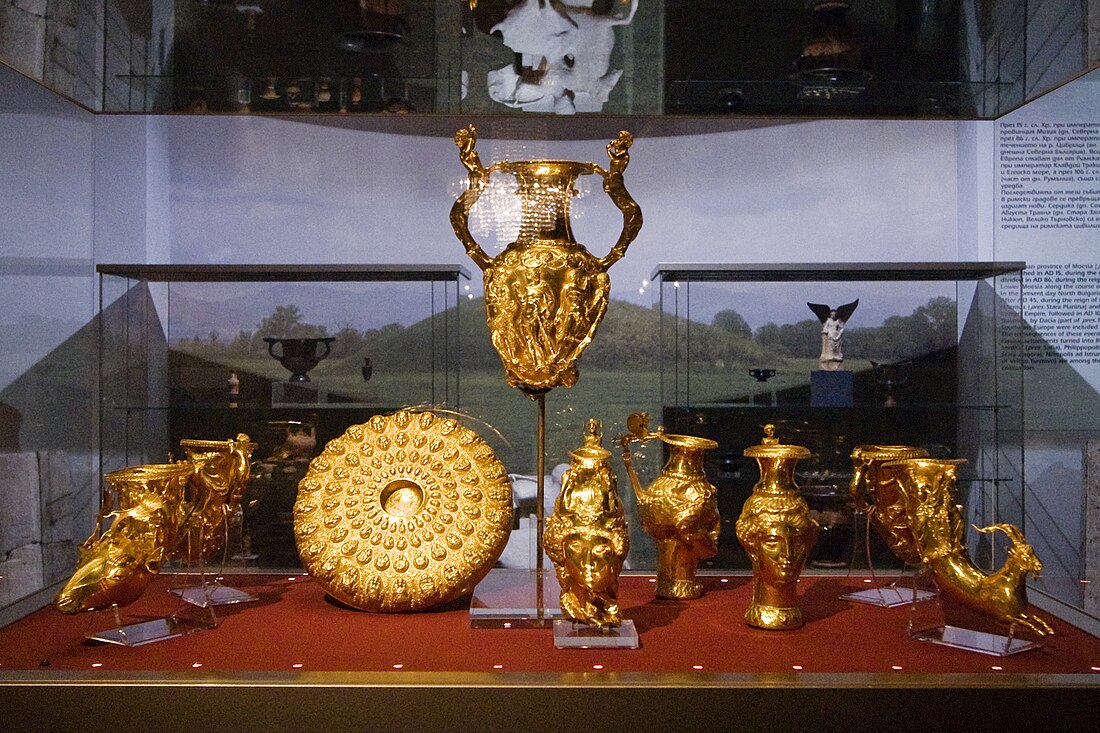Top Qs
Timeline
Chat
Perspective
Panagyurishte Treasure
Thracian treasure From Wikipedia, the free encyclopedia
Remove ads
The Panagyurishte Treasure (Bulgarian: Панагюрско златно съкровище) is a Thracian treasure.[1]
Description
The treasure consists of a phiale, an amphora-rhyton, and seven rhyta with total weight of 6.164 kg of 24-karat gold.[2][3][4] All nine vessels are richly and skilfully decorated.[5] It is dated from the turn of the 4th-3rd centuries BC.[6] It is thought to have been used as a royal ceremonial set by the Thracian king Seuthes III (NOTE: this is not supported by any current scholarship - references upcoming).[7][8][9]
The items may have been buried to hide them during 4th century BC invasions of the area by the Celts or Macedonians.[10] The phiale carries inscriptions giving its weight in Greek drachmae and Persian darics.[11]
Remove ads
Discovery

It was accidentally discovered on 8 December 1949 by three brothers, Pavel, Petko, and Michail Deikov, who worked together at the region of “Merul” tile factory near the railway station of the town of Panagyurishte, Bulgaria.[12] At the time of its discovery it was considered "the richest treasure to have been unearthed in Europe since World War II.".[13]
Exhibitions around the world and replicas
As one of the best known surviving artefacts of Thracian culture, the treasure has been displayed at various museums around the world.[14][5][15][16][17] The treasure is the centerpiece of the Thracian art collection of the Plovdiv Regional Historical Museum, the National Museum of History in Sofia, and the History Museum in Panagyurishte.[18] There are three replica sets, which are displayed in the museums in Panagyurishte, Sofia and Plovdiv, when the authentic treasure is lent for exhibitions abroad.[19]
Gallery
See also
Notes
Selected bibliography
External links
Wikiwand - on
Seamless Wikipedia browsing. On steroids.
Remove ads





